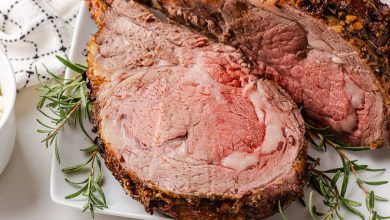Buckwheat Groats (Roasted and Cooked) – Nutritional Information
Buckwheat groats, when roasted and cooked, are a highly nutritious and versatile ingredient. Often used as a substitute for rice or pasta, they offer a rich, earthy flavor and a satisfying texture that pairs well with both savory and sweet dishes. Known for their health benefits, buckwheat groats are gluten-free and packed with essential nutrients, making them an excellent addition to a balanced diet.
Nutritional Overview (Per 100g Serving)
| Nutrient | Amount |
|---|---|
| Energy | 92 kcal |
| Protein | 3.38 g |
| Total Fat | 0.62 g |
| Saturated Fat | 0.134 g |
| Carbohydrates | 19.94 g |
| Fiber | 2.7 g |
| Sugar | 0.9 g |
| Calcium | 7.0 mg |
| Iron | 0.8 mg |
| Magnesium | 51.0 mg |
| Phosphorus | 70.0 mg |
| Potassium | 88.0 mg |
| Sodium | 4.0 mg |
| Zinc | 0.61 mg |
| Copper | 0.146 mcg |
| Manganese | 0.403 mg |
| Selenium | 2.2 mcg |
| Vitamin C | 0.0 mg |
| Thiamine (B1) | 0.04 mg |
| Riboflavin (B2) | 0.039 mg |
| Niacin (B3) | 0.94 mg |
| Vitamin B6 | 0.077 mg |
| Folate (B9) | 14.0 mcg |
| Vitamin B12 | 0.0 mcg |
| Vitamin A | 0.0 mcg |
| Vitamin E | 0.09 mg |
| Vitamin D2 | 0.0 mcg |
Allergen Information
Buckwheat groats are naturally gluten-free, making them an excellent choice for those with gluten sensitivities or celiac disease. However, it’s always important to ensure that they have not been cross-contaminated with gluten-containing products during processing. As with any food ingredient, individuals with specific allergies should always check for certification or any potential cross-contact warnings on packaging.
Dietary Preferences
- Gluten-Free: Naturally free from gluten, buckwheat groats are a perfect option for gluten-intolerant individuals.
- Vegan & Vegetarian: Buckwheat is plant-based, making it suitable for both vegan and vegetarian diets.
- Low in Fat: With only 0.62g of total fat per serving, it’s a great option for those looking to maintain a low-fat diet.
- High in Fiber: The 2.7g of dietary fiber in each 100g serving promotes digestive health, making it a beneficial choice for those focusing on gut health.
- Rich in Protein: At 3.38g of protein per serving, buckwheat groats can serve as a valuable protein source for plant-based diets.
Advice on Preparation and Use
Roasted and cooked buckwheat groats are versatile and can be used in a variety of dishes. They can be added to soups, stews, salads, or grain bowls for added texture and nutrition. You can also use buckwheat groats as a substitute for rice in pilafs or as a breakfast porridge. The slight nuttiness of roasted groats enhances both savory and sweet recipes.
When cooking buckwheat groats, it’s essential to rinse them well before cooking to remove any residue. Simply cook them in water or broth for about 10-15 minutes, depending on your desired texture. For a fluffier consistency, use a ratio of 1 part buckwheat to 2 parts liquid.
Conclusion
Buckwheat groats are a highly nutritious, gluten-free grain that can be enjoyed in a wide array of dishes. With their impressive nutrient profile, including protein, fiber, and essential minerals such as magnesium, iron, and phosphorus, they support overall health and wellbeing. Whether you are looking to diversify your meals or seeking a wholesome grain alternative, buckwheat groats provide a delicious, healthy, and easy-to-prepare option for all dietary preferences.










